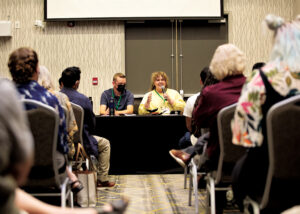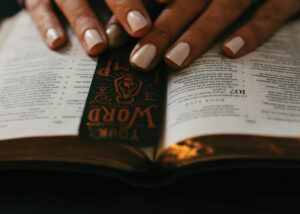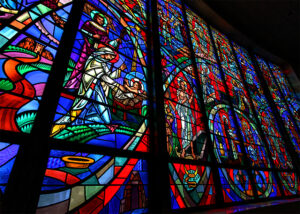We Mennonites hail from a rather iconoclastic tradition, but Christmas seems to be a partial exception to this. You see, this is a time of year when many of us set up small scenes of miniature statues – almost shrines – of Mary, Joseph, the newborn Jesus, and their many visitors, divine, agrarian, royal, and animal. Nativity scenes give form and dimension to the biblical narratives of that night and its incredible, paradoxical event: that of God becoming incarnate, God being born as we all are, and coming to dwell among human beings as one of us. These Nativity scenes are as close as we get, in our tradition, to icons, those reminders of the presence of God among us and in us.
Of course there are dangers to these images, too. (There is some merit, after all, to the iconoclasm of our forbears in faith!) The primary issue is that these depictions of the divine risk reducing God to our limited human conceptions; at their worst, they attempt to hem in God’s mystery. In the case of the Nativity, in particular, this involves whitewashing or sanitizing the scandal of the original event through depicting the holy family as only Caucasian-European in appearance, or through clothing them in the luxurious robes of the wealthy. Of course, there is a sense in which the narrative of Jesus’ birth is that of “everyfamily”; that is, it can be transposed into many different cultures and contexts – some of my favourites are the words of the Huron Carol (such as, “a ragged robe of rabbit skin enwrapped his beauty ’round”) and William Kurelek’s paintings of the holy family in various Canadian contexts in A Northern Nativity, seen in the video above. But such depictions must be careful not to erode the poverty and political oppression of the original event, or they’ll undermine its “upside-down kingdom” character and message: namely, the scandal of God becoming not just human, but one of the “least of these” (Matt. 25: 40, 45), a Jewish baby born to homeless parents in an occupied land. I recently learned that in the icon-rich tradition of Eastern Christianity, the theology of icons is derived from the event of the Incarnation, with Jesus being the icon – the visible face – of God (see this article). There’s something very fitting, then, about having not only visual but tangible representations of the Christ, especially at this time of year. Nativity scenes can thus serve as powerful reminders of the profound physicality of the Incarnation, as they evoke the draftiness of the open stable at midnight, the moist breath and pungent odours of the animals, the scratchiness of the hay, and the relief of Mary and Joseph once the agony of her labour pains had subsided and the newborn child with its soft, wrinkled skin lay safely in their arms. Here God took on vulnerable infant flesh and reiterated the central idea of Creation: that humankind is good and that we are all capable of imaging God – of being God’s icons – in this world that still thirsts for God’s presence.





